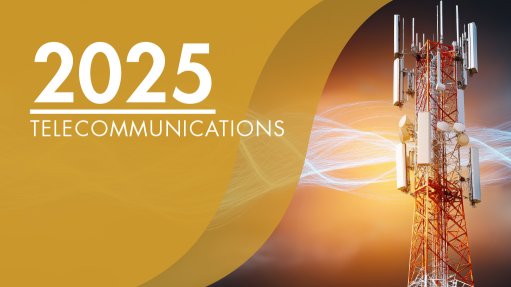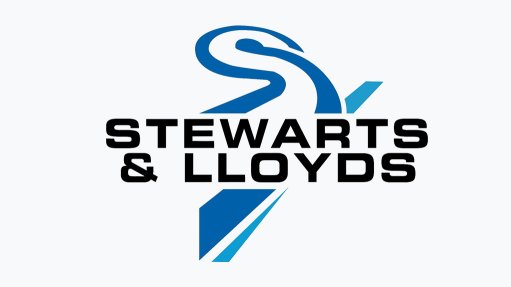WGC on the warpath to digitise, standardise gold market to enhance trust, transparency
World Gold Council (WGC) CEO David Tait has highlighted how the council is addressing four major challenges in the digitisation and standardisation of the gold market, namely a lack of trust, poor understanding, market fragmentation and a lack of global governance.
Speaking at the London Indaba this week, he noted how the WGC had recognised a significant lack of trust in gold at both the retail and institutional level.
“For instance, we know that approximately 50% of people don't trust gold, which has led to warnings not to buy the products from some regulators. Today's investors and consumers demand transparency and integrity and want to know for certain that products have been responsibly sourced and produced,” he said.
Tait also noted that it was clear that 60% of people did not understand gold, its market, or how to safely access or invest in the asset, again leading to warnings not to buy the product from some regulators.
“I recognised a confusing product and a highly fragmented global gold market. I have previously likened the market to medieval England, with various kings and fiefdoms ruling over their own patch, mostly working together, albeit in a haphazard and somewhat inefficient manner.
“I asked myself, why is gold as a product not globally standardised, and why is the gold market not joined up and fungible, hence much more attractive to global investors and asset managers?” he said.
Tait added that there also appeared to be a lack of global governance and regulatory oversight, with no overarching entity or body drawn from the entire supply chain working for and on behalf of the industry.
In this context, Tait said the WGC had set out to solve for integrity, accessibility and fungibility of gold and the gold markets through its Gold247 project, a digital transformation initiative designed to instil trust and transparency in gold and its market, and therefore lower the capital costs to entry from global investors.
He noted that, to address gold bar integrity, the London Bullion Market Association (LBMA) and WGC had partnered to develop and implement an international system of gold bar integrity (GBI).
“The GBI programme aims to put all legitimate gold onto an immutable blockchain-based database where buyers will be able to clearly see that the investment bar, coin, and – when technology allows – jewellery they purchase was resourced responsibly, refined reputably, and only passed through the hands of legitimate actors,” he said.
Tait said the WGC and LBMA were working with Swiss technology company aXedras to develop this database and have already made considerable progress.
“The LBMA has made exceptional progress in this regard, bringing, at the last count, 93 of 107 of their Good Delivery List refiners onto the system in very short order. In addition, all 33 WGC member LSM companies are in the process of adopting the database.
“Together with declaring the refining partners, we'll be uploading all newly refined production going forward, allowing for a transparent, miner-refiner handshake, which will enhance investor confidence in the immutability of the gold supply chain,” he explained.
Tait said this was an ambitious but necessary goal, because as regulatory regimes tighten and investors become more discerning, there was a need to move the industry towards total trust and transparency to compete for capital against other simpler, more transparent and trusted asset classes.
“I am confident that the day will, one day, come when it will be unthinkable to buy gold without first checking its origin and integrity in the GBI database. My goal is that if you are holding gold for nefarious reasons outside the database, you will find the available buyers for your gold start to decline, and the market for your gold gradually sink,” Tait said.
He explained that the adoption of this database was the critical foundation for a more accessible and fungible market that would unlock greater gold participation and significant gold demand.
“GBI is not only essential for safeguarding the future of the gold investment market, but it also has a critical role to play in helping strengthen responsible supply chains,” Tait said.
In particular, he referred to the issue of artisanal and small-scale gold mining (ASGM).
“ASGM is not a new challenge. It will always be with us, and no one, least of all the WGC, is proposing criminalising or trying to eradicate the practice. But its scale and value have transformed over the last 25 years from 4% of total gold production at the turn of the century to 20%.
“Against the backdrop of gold surging from $250/oz to almost $3 500/oz, the WGC has a dedicated workstream on addressing the many challenges associated with ASGM,” Tait explained.
He said supply chain transparency and the digital tracking of responsible gold from mine to market had a major role to play in differentiating responsibly mined gold from that which is not.
“I hope that one day, GBI will not only underpin a more trusted gold investment market, but will also have contributed to helping solve part of the ASGM challenge by minimising the value that illegally produced gold has in the market,” he said.
In addition, Tait said the WGC had been forging ahead with three digitalisation strands, which solve for both accessibility to and fungibility of the gold market.
He said the first strand was an initiative called wholesale digital gold, which was borne from a four-year engagement between the Financial Market Standards Board and all banks active in the gold market. This had as its ambition the task of making markets more transparent, trusted, and accessible, principally through digitalisation.
“Wholesale digital gold is the next-generation digitised ecosystem for wholesale financial market participants to trade, hold, and utilise gold as collateral, initially focusing on the global over-the-counter market, otherwise known as the 400 oz Good Delivery Bar market,” he said.
Tait noted that the WGC had brought together many of the major banks from across the gold market to build consensus on the introduction of a digitalised market to complement the existing physical markets.
“A digital representation of physical gold can streamline and enhance pre- and post-trade processes, presenting an opportunity for market participants, regulators, and stakeholders to collaborate in developing a new digitalised market framework,” he said.
Tait said a distributed ledger could increase operational efficiency, for example, by reducing the volume of individual trades requiring settlement using netting and compression, and could lower operational risks and costs.
Further, he said the use of tokenisation, smart contracts and distributed ledger technology would automate post-trade affirmation, confirmation and manual settlement processes, reduce reconciliation efforts and increase the speed and accuracy of trade execution and settlement.
“Eliminating gold's five-hour staggered delivery versus payment phenomenon will give much comfort to compliance and risk officers around the world. In this context, we hope to achieve the pledging and transmission of digital gold as collateral between a collection of the most major bullion banks by year-end, which will be a hugely significant moment for the gold industry and the bullion banks,” he said.
The second strand Tait described was that, through the introduction of a Standard Gold Unit (SGU), he envisaged digitally standardising all shapes, sizes, and purities of gold globally, thereby providing such a level of investor transparency and simplicity that the many capital barriers to entry that currently existed to the gold market would fall away. This would attract many new institutional participants with vast capital flows in tow.
“There are a handful of gold tokens in the market today, and many more that have failed. Essentially, these tokens have all been digital islands, adding no value to the mobility and utility of gold as a financial asset.
“To date, no attempt at the digitalisation of gold has addressed the challenging question of how can a truly fungible gold token be created with intrinsic trust, representing the monetary value of gold while addressing the fact that the metal is fragmented across geographies and has different bar weights and purities,” Tait said.
He said that, without developing an ecosystem for tokenisation that could overcome these challenges, gold would remain a spectator to the evolution of financial markets and retain its position on the sidelines.
He noted that the SGU would be the mechanism by which all gold of known integrity contained within the GBI database could be tokenised such that the monetary value of the gold could be decoupled from the specific bars in the ecosystem.
“The SGU tokenisation process allows for this by firstly defining the number of digital standard gold units that are contained in a bar of gold, irrespective of its purity, weight and location.
“For example, if an SGU represents 1 g of pure gold, it is straightforward to run a simple algorithm over a 400 oz 995 purity bar, or a 1 kg 9999 purity bar, and generate the exact number of SGU units or tokens in each and therefore the monetary value of each bar,” Tait said.
He explained that, in parallel, a separate attributes record would be created that notes the purity, weight, and location of the gold bar from which the SGU tokens were generated. However, he noted that the link between the two had now been successfully broken.
“This SGU process, for which we have a patent pending, enables all physical gold of trusted integrity to be transformed into fungible, digital gold units that can be used to underpin a range of products and services, including tokenisation and vaulted gold collateral, irrespective of the physical bars, attributes, and locations, by removing the restricted nature of today’s gold market that inextricably links monetary value to a specific gold bar at all times. We have the potential to unlock vast opportunities for gold as a financial asset in the next generation of tokenised markets,” Tait said.
The third strand, Tait explained, was that the WGC and LBMA had joined forces to pursue the reclassification of gold as a Level One High Quality Liquid Asset (HQLA) within Basel III regulations.
In 2013, the European Banking Authority was asked by the European Commission to advise on uniform standard definitions of liquidity assets for the Liquidity Coverage Ratio (LCR) rule. At the time, the European Banking Authority mandate designated gold, among other non-central bank eligible but tradable assets, as a potential LCR candidate.
However, the collection of gold market data did not begin until late 2018, so the European Banking Authority could not access OTC market data for the assessment. As such, gold was not included in the final HQLA list and had been burdened with the highest capital penalties ever since.
Tait labelled this “a significant and costly gold market own goal”.
“However, we are now able to present robust and detailed trade data to prudential regulators. Thanks to the increased transparency and availability of OTC, futures and options, and exchange-traded funds market data, we believe that the use of gold within the prudential regulatory system could be a solution for future adverse financial liquidity events and other forms of systemic risk,” he said.
Tait noted that it appeared clear that most, if not all, central banks were of the same mind, as evidenced by their purchase of more than 1 000 t each over the past three years.
“One of the key characteristics an asset must demonstrate to be considered an HQLA is a robust underlying market infrastructure, of which gold is lacking. Although the journey to re-designate gold as an HQLA through an open consultation at the BCBS will be complex and lengthy, it is imperative that the industry enhances the financial market infrastructure, much of which will be realised through wholesale digital gold and the SGU initiatives,” he said.
Tait said that achieving the objectives of the Gold247 project was critical to the future of the gold market and gold's role as a financial asset.
“The development and implementation of initiatives like wholesale digital gold and the SGU are pivotal in transforming gold from a passive store of value into an active component of the modern financial system,” he said.
Article Enquiry
Email Article
Save Article
Feedback
To advertise email advertising@creamermedia.co.za or click here
Announcements
What's On
Subscribe to improve your user experience...
Option 1 (equivalent of R125 a month):
Receive a weekly copy of Creamer Media's Engineering News & Mining Weekly magazine
(print copy for those in South Africa and e-magazine for those outside of South Africa)
Receive daily email newsletters
Access to full search results
Access archive of magazine back copies
Access to Projects in Progress
Access to ONE Research Report of your choice in PDF format
Option 2 (equivalent of R375 a month):
All benefits from Option 1
PLUS
Access to Creamer Media's Research Channel Africa for ALL Research Reports, in PDF format, on various industrial and mining sectors
including Electricity; Water; Energy Transition; Hydrogen; Roads, Rail and Ports; Coal; Gold; Platinum; Battery Metals; etc.
Already a subscriber?
Forgotten your password?
Receive weekly copy of Creamer Media's Engineering News & Mining Weekly magazine (print copy for those in South Africa and e-magazine for those outside of South Africa)
➕
Recieve daily email newsletters
➕
Access to full search results
➕
Access archive of magazine back copies
➕
Access to Projects in Progress
➕
Access to ONE Research Report of your choice in PDF format
RESEARCH CHANNEL AFRICA
R4500 (equivalent of R375 a month)
SUBSCRIBEAll benefits from Option 1
➕
Access to Creamer Media's Research Channel Africa for ALL Research Reports on various industrial and mining sectors, in PDF format, including on:
Electricity
➕
Water
➕
Energy Transition
➕
Hydrogen
➕
Roads, Rail and Ports
➕
Coal
➕
Gold
➕
Platinum
➕
Battery Metals
➕
etc.
Receive all benefits from Option 1 or Option 2 delivered to numerous people at your company
➕
Multiple User names and Passwords for simultaneous log-ins
➕
Intranet integration access to all in your organisation





















